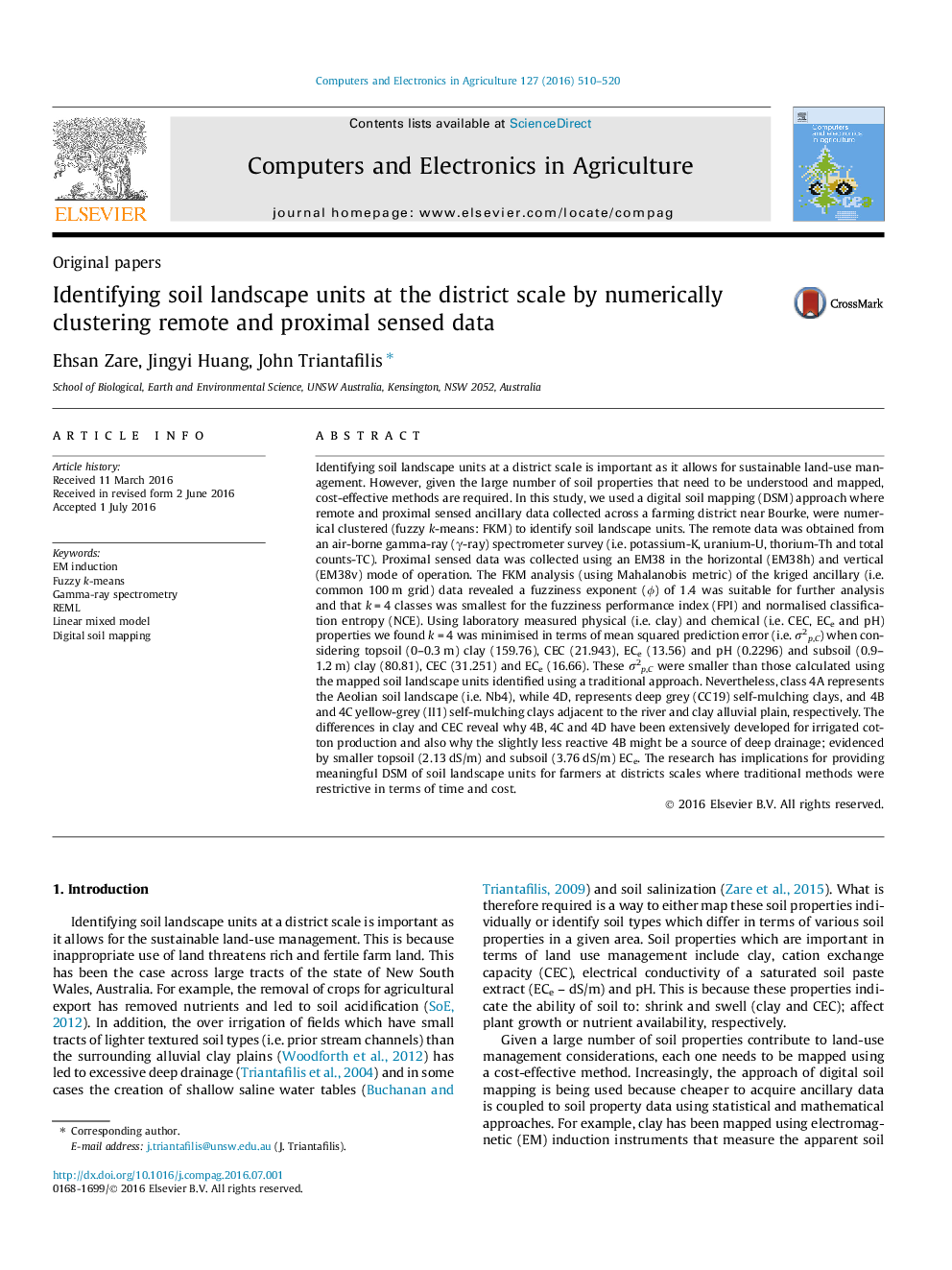| Article ID | Journal | Published Year | Pages | File Type |
|---|---|---|---|---|
| 6540204 | Computers and Electronics in Agriculture | 2016 | 11 Pages |
Abstract
Identifying soil landscape units at a district scale is important as it allows for sustainable land-use management. However, given the large number of soil properties that need to be understood and mapped, cost-effective methods are required. In this study, we used a digital soil mapping (DSM) approach where remote and proximal sensed ancillary data collected across a farming district near Bourke, were numerical clustered (fuzzy k-means: FKM) to identify soil landscape units. The remote data was obtained from an air-borne gamma-ray (γ-ray) spectrometer survey (i.e. potassium-K, uranium-U, thorium-Th and total counts-TC). Proximal sensed data was collected using an EM38 in the horizontal (EM38h) and vertical (EM38v) mode of operation. The FKM analysis (using Mahalanobis metric) of the kriged ancillary (i.e. common 100 m grid) data revealed a fuzziness exponent (Ï) of 1.4 was suitable for further analysis and that k = 4 classes was smallest for the fuzziness performance index (FPI) and normalised classification entropy (NCE). Using laboratory measured physical (i.e. clay) and chemical (i.e. CEC, ECe and pH) properties we found k = 4 was minimised in terms of mean squared prediction error (i.e. Ï2p,C) when considering topsoil (0-0.3 m) clay (159.76), CEC (21.943), ECe (13.56) and pH (0.2296) and subsoil (0.9-1.2 m) clay (80.81), CEC (31.251) and ECe (16.66). These Ï2p,C were smaller than those calculated using the mapped soil landscape units identified using a traditional approach. Nevertheless, class 4A represents the Aeolian soil landscape (i.e. Nb4), while 4D, represents deep grey (CC19) self-mulching clays, and 4B and 4C yellow-grey (II1) self-mulching clays adjacent to the river and clay alluvial plain, respectively. The differences in clay and CEC reveal why 4B, 4C and 4D have been extensively developed for irrigated cotton production and also why the slightly less reactive 4B might be a source of deep drainage; evidenced by smaller topsoil (2.13 dS/m) and subsoil (3.76 dS/m) ECe. The research has implications for providing meaningful DSM of soil landscape units for farmers at districts scales where traditional methods were restrictive in terms of time and cost.
Related Topics
Physical Sciences and Engineering
Computer Science
Computer Science Applications
Authors
Ehsan Zare, Jingyi Huang, John Triantafilis,
